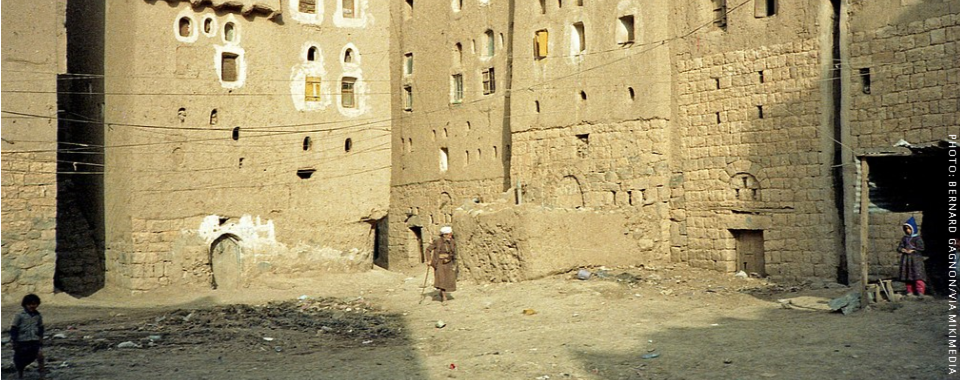BY CHRISTINA MURPHY
As much as we try to focus on the performance of individual countries on their own terms, there is an unavoidable curiosity and interest attached to the rankings of the Fragile States Index (FSI), and specifically to the country that ranks “top.” In the history of the FSI, only three countries had ever held the ignominious distinction of number one spot – Somalia and South Sudan, who have traded places for most of the duration of the FSI, as well as Cote d’Ivoire, who was ranked top of the very first FSI in 2005. This year, a fourth country has taken top position: Yemen.

With a total score of 113.5, Yemen’s ascension up the FSI probably comes as little surprise to many, as the result of a prolonged civil war and humanitarian catastrophe. Yemen receives maximum scores of 10.0 in the areas of Security Apparatus, Factionalized Elites, and External Intervention, and has scores of 9.0 or above in all but two indicators (Human Flight and Uneven Development). Yemen is also the fourth-most worsened country over the last decade, behind only Libya, Syria, and Mali. At the indicator level, the country saw the greatest worsening in External Intervention (+2.7 points), Human Rights and Rule of Law (+2.2 points), Group Grievance (+1.9 points), and Refugees and IDPs (+1.7 points) during this period.
Now entering its fifth year, the country’s civil war continued to intensify throughout 2018, with seemingly little hope of resolution. In June 2018, the launch of the Saudi and Emirati coalition-led “Operation Golden Victory” focused global attention on the Houthi-controlled city of Hodeidah. Located on the coast of the Red Sea in western Yemen, Hodeidah serves as a critical port for the delivery of food, fuel, and aid to the country. Humanitarian and human rights groups warned that attacks on Hodeidah could have massive impacts on the Yemeni population, affecting more than 300,000 children and sparking famine throughout the country.1 Although the worst-case scenarios did not ultimately come to pass, data collected by the Armed Conflict Location and Event Data Project (ACLED) showed that civilian deaths increased by 164% in the four months following the launch of the offensive.2 After months of negotiations, the United Nations brokered a fragile ceasefire deal between Houthi forces in Hodeidah and the internationally recognized government in December 2018. However, as of the time of publication, troop withdrawals had stalled and the city suffered a major outbreak of violence in mid-March.
As reflected in Yemen’s extremely high FSI scores of 9.7 in Demographic Pressures, 9.6 in Refugees and IDPs, and 9.8 in Public Services, the humanitarian crisis in Yemen is dire. By the end of 2018, 75 percent of the population was in need of humanitarian assistance3 and more than 3.5 million people were displaced.4 Some 14 million Yemenis face starvation.5 Schools, hospitals, and critical infrastructure such as water treatment facilities have been damaged or destroyed in the fighting. Since 2016 the country has experienced the worst epidemic of cholera in recorded history, causing more than 1 million suspected cases.6
Given the current crisis, it may be tempting to attribute Yemen’s fragility solely to the civil war, or even to the 2011 Arab Spring protests that led to the end of former president Ali Abdullah Saleh’s rule. However, the roots of fragility in Yemen run much deeper. Looking back at the FSI from 2007 – a full five years before the Arab Spring – Yemen was still ranked among the top 25 most fragile states in the world. In the 2007 FSI, Yemen’s highest indicator scores were Factionalized Elites (9.0), Uneven Development (8.7), Public Services (8.1), Economy (8.0), and Demographic Pressures (8.0). These scores point to characteristics of the Yemeni state which would later undermine the country’s ability to adapt to and absorb pressures on the state, eventually facilitating the descent into civil war.
For example, the administration of President Saleh, who ruled Yemen for more than 30 years, was notorious for widespread corruption and mismanagement. One UN report estimates that Saleh may have amassed up to $60 billion in assets through corruption after taking power.7 As reflected in the country’s high Uneven Development, Public Services, and Demographic Pressures scores, the wealth of Saleh and the political elite failed to translate into benefits for the wider Yemeni population. Yemen remains one of the poorest countries in the region and more than 34% of the population was living below the poverty line in 2005.8 As in many other countries in the region, these conditions fueled grievances around unemployment, economic conditions and corruption that led directly to the 2011 protests which resulted in Saleh’s departure. Furthermore, the country’s powerful tribes and lingering north-south divide have historically placed great pressure on the state in the areas of Factionalized Elites and State Legitimacy. During his tenure Saleh was able to maneuver the country’s fractious tribal politics and juggle alliances to stay in power. However, this came at the expense of building strong state institutions, and the country’s various tribal and political factions fractured after his departure.
Looking ahead, it is hoped that the ceasefire negotiated in December 2018 can be the first step on the road toward a larger peace process in 2019 and beyond. Negotiating a political and military solution to end the conflict and provide protection and aid to Yemeni civilians is essential in the short term. But as Yemen and its partners eventually seek to rebuild and imagine a post-conflict future, it is equally critical to consider the historical roots and drivers of fragility. Addressing these longer term needs highlighted by the country’s FSI scores – from encouraging sustainable and inclusive economic growth, to building strong and transparent state institutions – must be an integral part of any recovery framework in order to build and sustain peace in Yemen.
Endnotes
1. https://www.unicef.org/emergencies/yemen-crisis/hodeidah
2. https://www.theguardian.com/global-development/2018/sep/26/huge-spike-in-yemen-violence-as-civilian-deaths-rise-by-164-in-four-months-hodeidah
3. https://www.aljazeera.com/news/2018/12/yemen-face-worst-humanitarian-crisis-2019-181204105615554.html
4. https://data.humdata.org/dataset/yemen-displacement-data-area-assessment-iom-dtm
5. https://www.mercycorps.org/articles/yemen/quick-facts-what-you-need-know-about-crisis-yemen
6. https://www.undispatch.com/yemen-is-currently-facing-the-largest-documented-cholera-epidemic-in-modern-times-a-new-report-warns-it-could-get-worse/
7. https://www.aljazeera.com/news/2015/02/yemen-president-saleh-stole-60bn-150225180029123.html
8. http://www.worldbank.org/en/news/feature/2010/01/20/poverty-in-yemen
